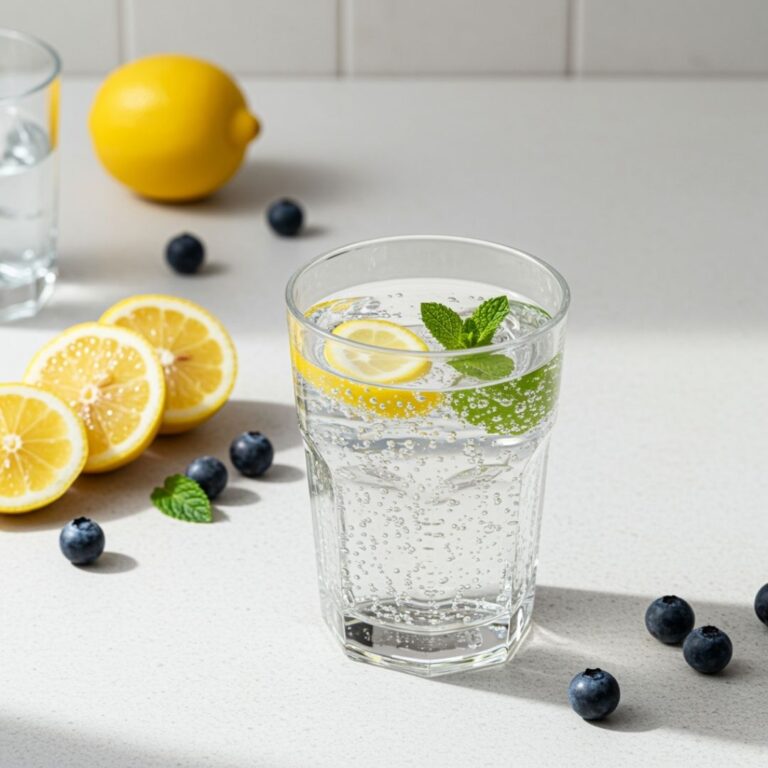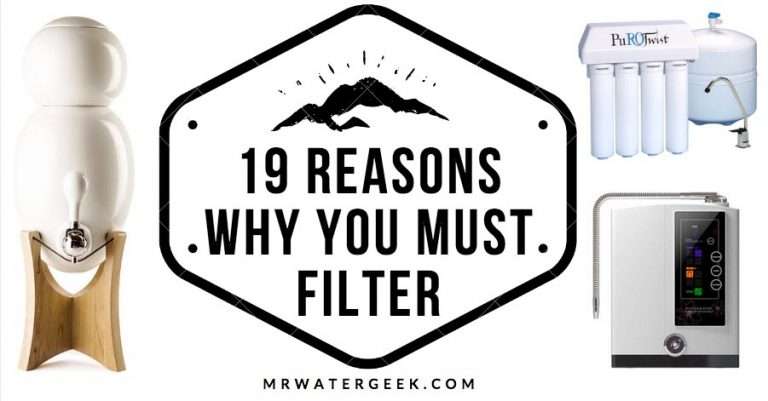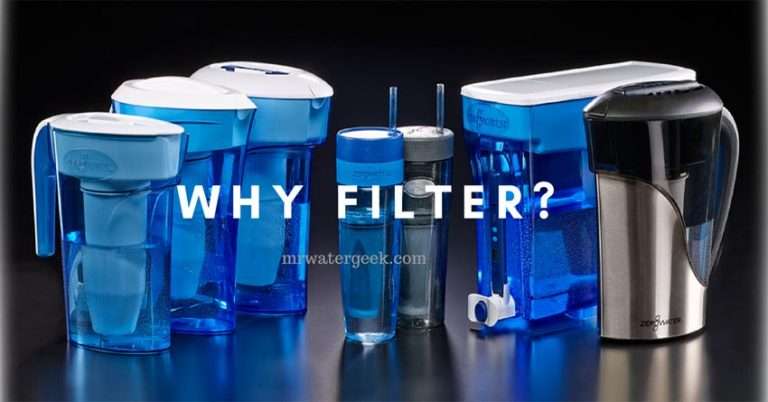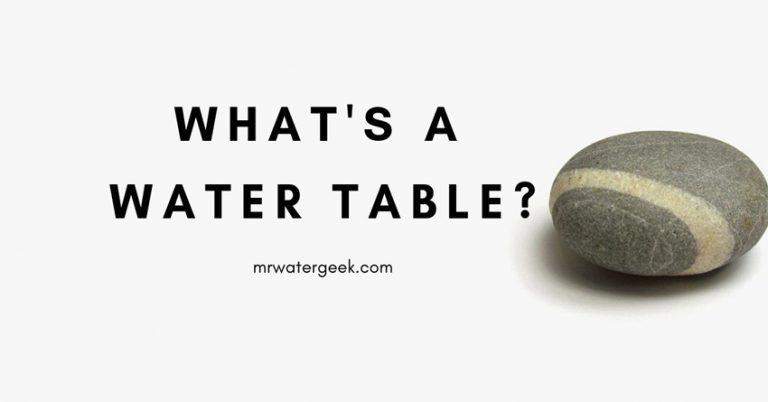4 Contaminants in Tap Water: What’s Really Coming Out of Your Faucet?
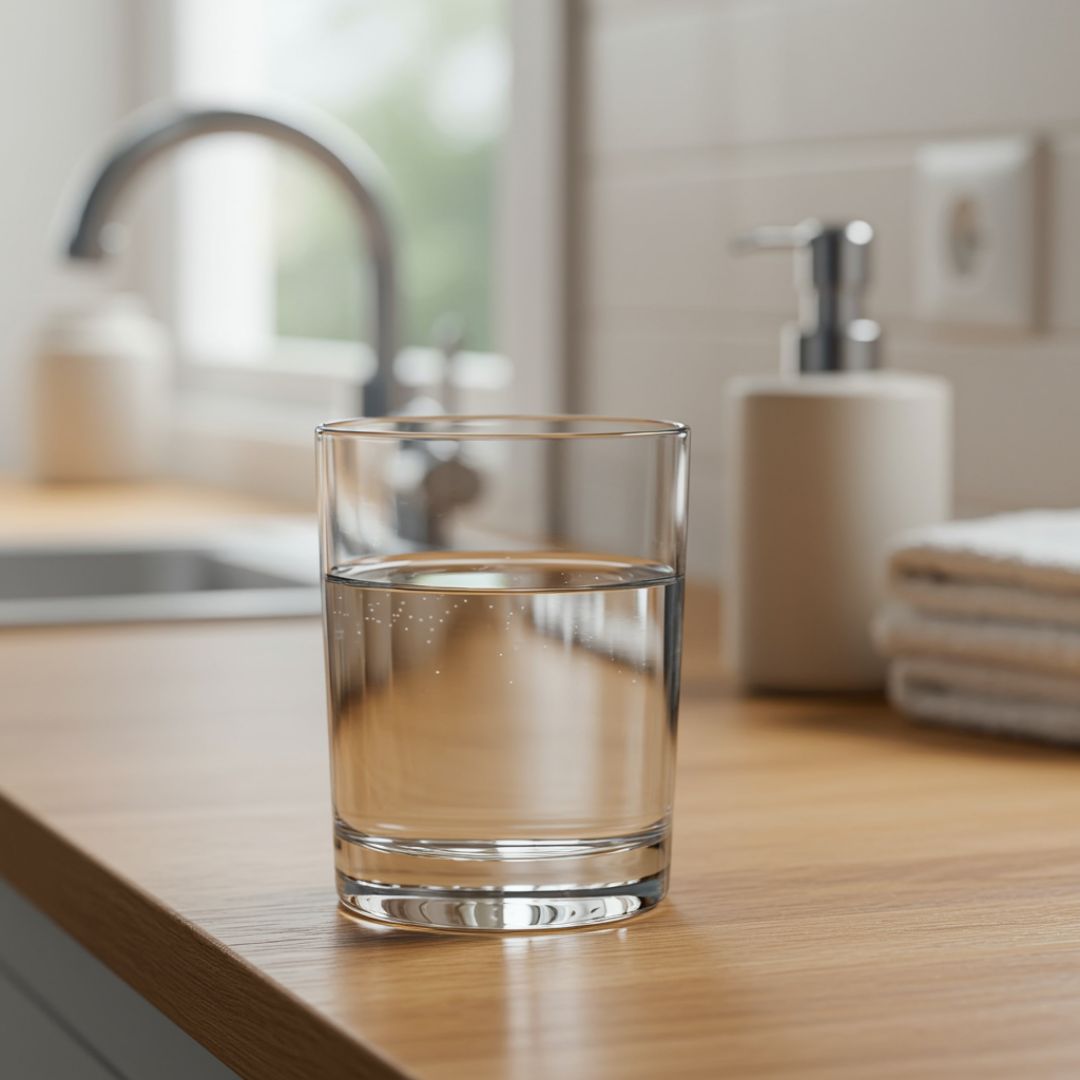
Millions of American homes connect to tap water, which is the primary source of water for an estimated 90% of the US population. But recent data from the Environmental Working Group (EWG) paints a less rosy picture regarding the safety of our drinking water from public systems. Their comprehensive testing reveals hundreds of contaminants in the vast majority of tap water supplies in the country.
Just because the water comes from a local water treatment facility does not guarantee that it meets all safety standards. So today, I’ll walk you through the most common drinking water contaminants, their potential health effects, and practical steps you can take to ensure your drinking water remains truly safe to drink.
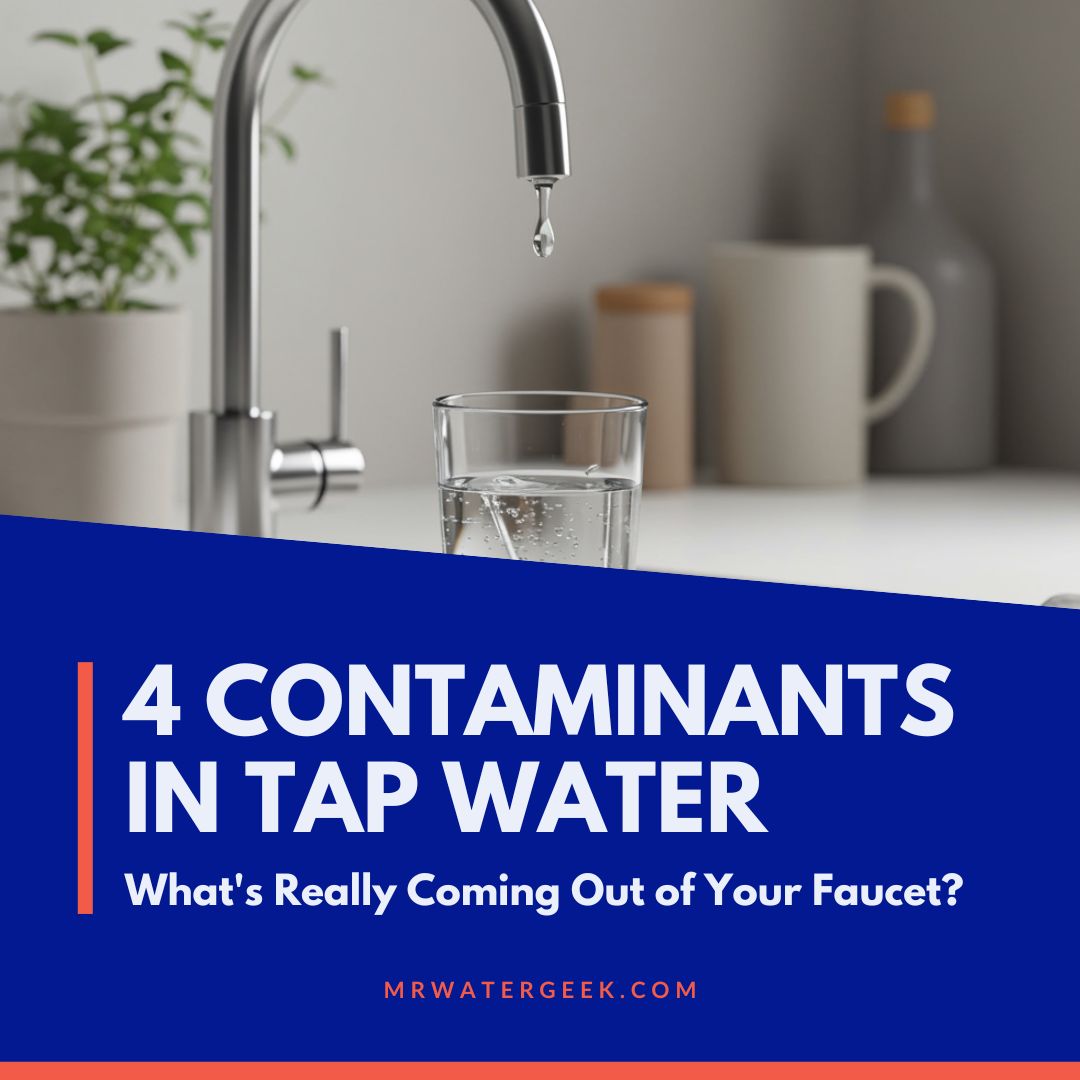
4 Contaminants in Tap Water You Should Know
The reality may surprise you: even crystal-clear tap water often contains disinfection byproducts, heavy metals, and other substances you wouldn’t knowingly swallow. Knowing what’s polluting your water supply enables you to make better decisions for your family’s health.
Although water treatment facilities do their best to provide safe drinking water, they don’t remove all contaminants. By learning what these unwanted substances are, you can determine their health risks and what kinds of filtration methods you will need to protect your household.
Let’s take a look at what might be coming out of your faucet right now.
How Contaminated Is Tap Water?
The EWG’s nationwide testing found an average of 22 contaminants, with some areas showing high levels of more than 30 different kinds of substances in public water systems in the United States. What’s even more worrisome is that the federal government does not regulate many of these contaminants at all.
The EPA currently limits just 91 of the hundreds of contaminants found in U.S. tap water under the Safe Drinking Water Act. That leaves hundreds of potentially toxic chemicals without legal limits in your water supply.
Public water systems must comply with these minimum federal standards, but many experts believe that these regulations have failed to keep up with scientific research on water contamination. Some substances currently show up at levels that technically pass outdated legal standards but still pose potential risks, according to more recent studies.
Most alarming are those areas where older infrastructure, agricultural runoff, or industrial activity in the vicinity could pose an added risk of contamination that can’t even be covered by existing safe-drinking water standards.
Want to learn more about the safety and ramifications of tap water in different households? Then, check out my recent posts:
- Is Tap Water Safe To Drink?
- Should You Get A Water Treatment With Chlorine Removal?
- Does EPA Regulate All Contaminants in Tap Water?
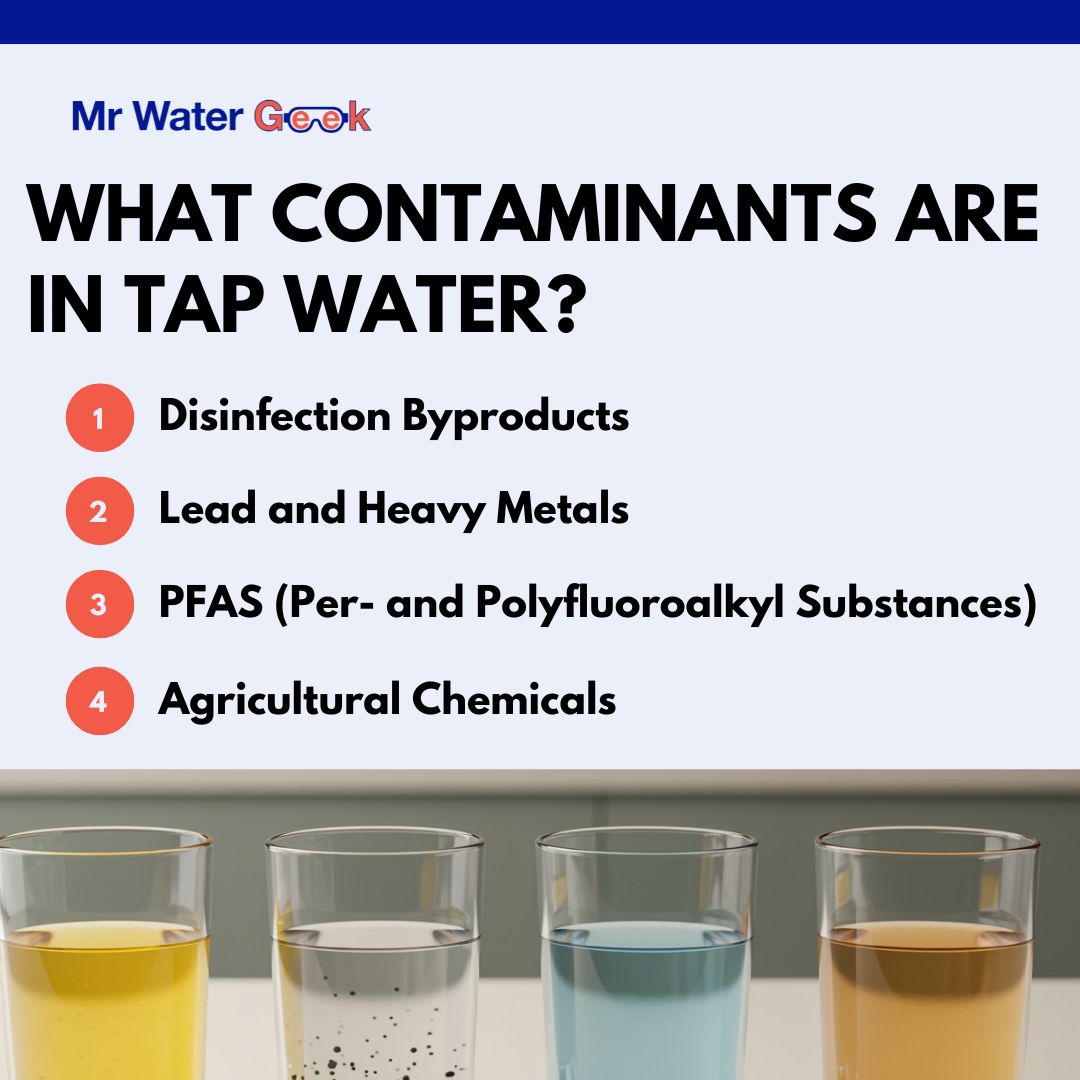
What Contaminants Are In Tap Water?
Disinfection Byproducts
Chlorine and other disinfectants react with organic matter in water sources to form these compounds. Notably, long-term exposure to high levels of trihalomethanes and haloacetic acids increases the risk of cancer, reproductive issues, and may affect fetal development.
Lead and Heavy Metals
Lead contaminates drinking water as pipes and fixtures corrode, especially in homes built before 1986. Even low levels of exposure can cause serious health effects, including developmental delays in children, lower IQ, and kidney problems. Many American water systems also contain traces of other metals, including copper, arsenic, and chromium.
PFAS (Per- and Polyfluoroalkyl Substances)
These “forever chemicals” linger in water and your body for years. Industries use PFAS in countless products, from non-stick cookware to stain-resistant fabrics, as well as in firefighting foam. Research has associated them with hormone disruption, lower fertility, developmental delays and cancer risk.
Agricultural Chemicals
Fertilizers, pesticides, and herbicides wash off farmland and into water supplies. Nitrates from fertilizers are particularly risky for infants and pregnant women. These impurities often change the pH of water, which has implications for its taste and health effects. Numerous agricultural chemicals also interfere with hormone function, and can raise cancer risks.
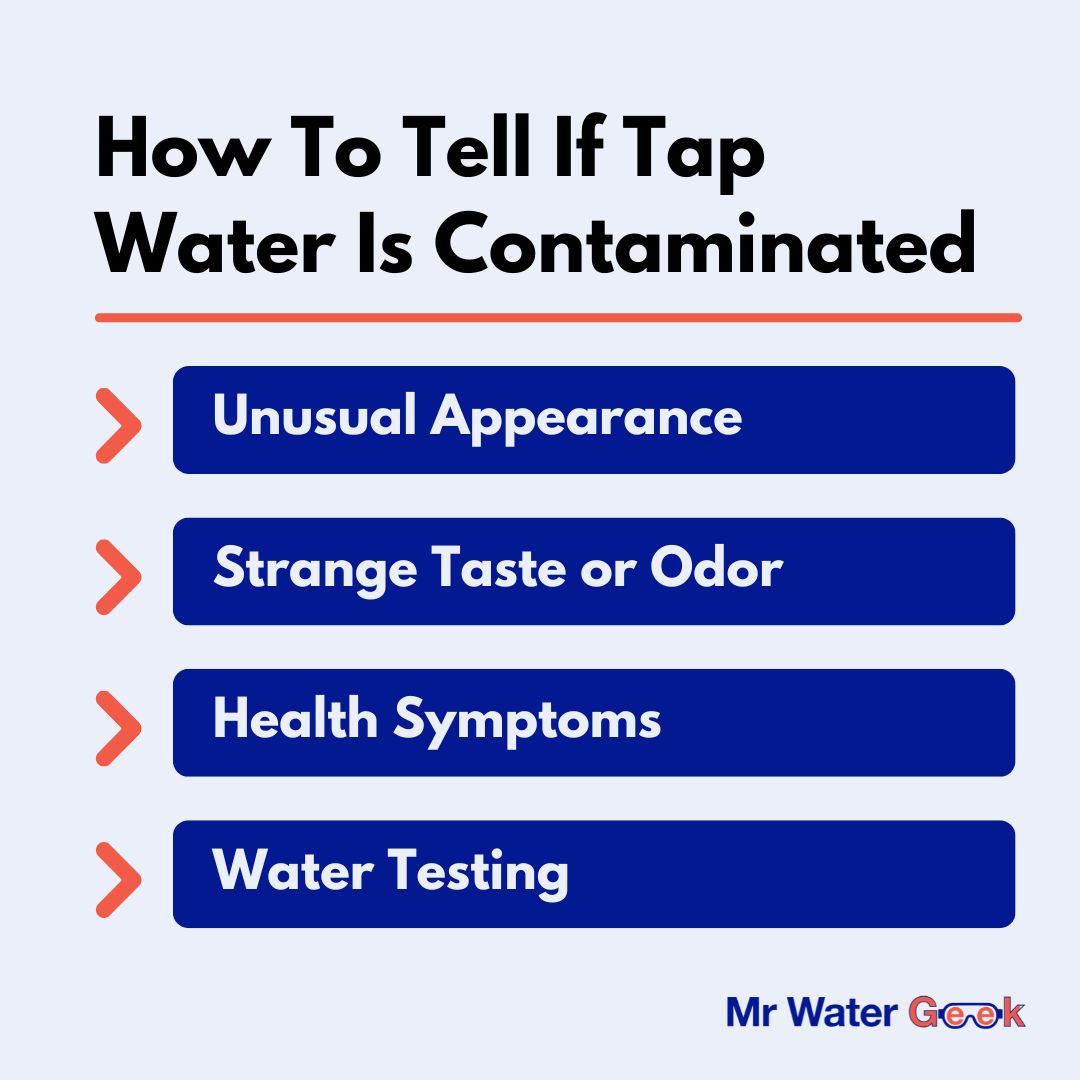
How To Tell If Tap Water Is Contaminated
Identifying contamination often requires testing, but several warning signs can alert you to potential problems. Watch for these indicators that your water supply needs attention:
Unusual Appearance
Cloudy, discolored, or gritty particles signal potential contamination in your water. Brown or yellow water is usually a sign of rust or sediment, while blue-green tints could indicate copper contamination.
Strange Taste or Odor
Metallic tastes are usually a sign of pH imbalance or heavy metals, and chlorine smells indicate high levels of disinfectant. Chemical odors, like rotten eggs, indicate hydrogen sulfide produced by bacteria.
Health Symptoms
Chronic gastrointestinal problems, skin irritation after bathing, or unexplained health issues could relate to water quality. Track when symptoms tend to arise and if you feel better with different water sources. These patterns provide a wealth of information about potential water-related health effects.
Water Testing
The best way to know is to test your water supply. Home test kits offer general information, while professional laboratory testing identifies the exact contaminants and how much of them is present.
Understanding what lurks in your tap water empowers you to take control of your family’s health.
While public water systems work hard to meet basic safety standards, many contaminants still flow through our faucets daily. Regular testing and appropriate filtration provide your best defense against these unwanted substances. So, stay vigilant about your water quality to ensure safe drinking water for years to come.
Check out my last post, “HORRIBLE Fluoride Tap Water Facts (and How To Fix It),” for even more eye-opening facts about your home’s tap water and drinking water generally.
Finally, if you want more product reviews, how-tos, and helpful posts on all things water, find your way over to my blog. I’m always happy to help!
Stay cool & stay hydrated,
Shashank Varma (Mr. Water Geek)

